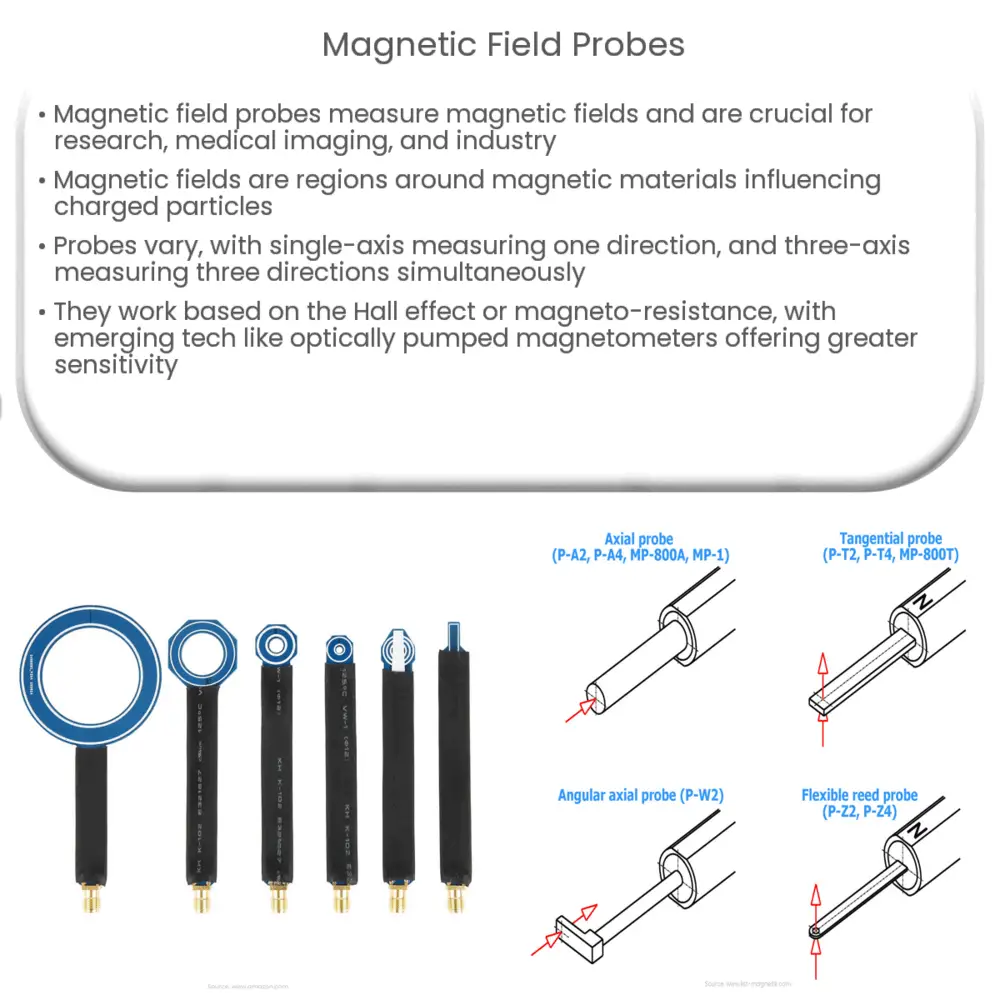Explore the world of magnetic field probes, their types, working principles, diverse applications, latest advances, and future trends.

Magnetic Field Probes: An Essential Tool in Electromagnetic Studies
Magnetic field probes are key instruments used to measure magnetic fields. They’re essential in a wide range of applications, including scientific research, medical imaging, and industrial processes. Understanding the role, operation, and utility of magnetic field probes can provide valuable insight into these diverse fields of study.
Understanding Magnetic Fields
Before diving into the specifics of magnetic field probes, it’s important to understand what a magnetic field is. Simply put, a magnetic field is a region around a magnetic material or a moving electric charge within which the force of magnetism acts. This invisible force exerts a pull on ferromagnetic materials and influences the motion of charged particles. The strength and direction of a magnetic field is represented by magnetic field lines.
Types of Magnetic Field Probes
- Single-axis probes: These probes can only measure the magnetic field strength in one direction at a time. They are often used in applications where the field is uniform, or its direction is already known.
- Three-axis probes: These probes can measure the magnetic field strength in three perpendicular directions simultaneously, providing a full vector measurement of the field. This type of probe is used when the field’s direction and strength vary within the area of interest.
How Magnetic Field Probes Work
Magnetic field probes typically function based on two key principles: the Hall effect or magneto-resistance. The Hall effect principle involves a thin conducting plate of material through which an electric current is passed. When this plate is subjected to a perpendicular magnetic field, a voltage difference is created across the plate, proportional to the magnetic field strength. On the other hand, magneto-resistance-based probes work by measuring the change in resistance of a material subjected to a magnetic field.
Applications of Magnetic Field Probes
The applications of magnetic field probes are broad and diverse, reflecting the fundamental role that magnetic fields play in both nature and technology. From analyzing the earth’s magnetic field to fine-tuning the performance of an MRI machine, these probes are at the heart of electromagnetic studies.
In the following section, we’ll delve deeper into the specific applications, the latest advances in magnetic field probe technology, and the future trends shaping this exciting field.
Specific Applications of Magnetic Field Probes
Magnetic field probes play a crucial role in various fields. In medicine, they’re used in MRI machines to precisely measure and adjust the magnetic field, ensuring high-quality imaging. In geophysics, probes help to study the Earth’s magnetic field, contributing to our understanding of the planet’s interior and atmospheric processes. In industry, they’re used to test the magnetic fields produced by electronic devices, ensuring they meet safety standards and do not interfere with other devices.
Latest Advances and Future Trends
Technological advances continue to push the limits of what’s possible with magnetic field probes. For instance, the development of optically pumped magnetometers (OPMs) has revolutionized magnetic field measurement. OPMs, which use the principles of quantum mechanics to measure magnetic fields, offer superior sensitivity compared to traditional probe types.
Another promising trend is the miniaturization of probes, driven by advancements in nanotechnology. Nano-scale magnetic field probes are now emerging, opening up new possibilities for research and applications, particularly in the biomedical field.
Conclusion
In conclusion, magnetic field probes are vital tools in the realm of electromagnetic studies. From measuring the Earth’s magnetic field to ensuring the safe operation of medical and electronic equipment, these devices fulfill a wide range of critical functions. As technology continues to advance, so too will the capabilities of magnetic field probes. The rise of quantum-based and nano-scale probes exemplify the exciting future of this field. Embracing these technological shifts, we can look forward to new discoveries and applications that enhance our understanding of the world and improve our lives.

